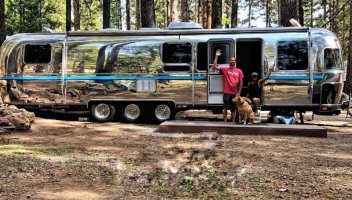I Drink Your Milkshake!
New Member
Hello,
My wife andI live in Graeagle, CA and just had our well dug and now I'm trying to figure out which pump to use for our off grid property.
The well is 284' deep and the static water level is at 191' with a yield of 20 gpm.
We have an Airstream trailer on the property with septic and propane and Solar is the last utility I need to figure out. I'm trying to design it (perhaps erroneously) so the well pump will fill a 1000g holding tank which I will use to supply our trailer and also use for irrigation.
My question is which company makes a reliable submersible pump with an external controller that is solar friendly.
Thanks!
My wife andI live in Graeagle, CA and just had our well dug and now I'm trying to figure out which pump to use for our off grid property.
The well is 284' deep and the static water level is at 191' with a yield of 20 gpm.
We have an Airstream trailer on the property with septic and propane and Solar is the last utility I need to figure out. I'm trying to design it (perhaps erroneously) so the well pump will fill a 1000g holding tank which I will use to supply our trailer and also use for irrigation.
My question is which company makes a reliable submersible pump with an external controller that is solar friendly.
Thanks!

